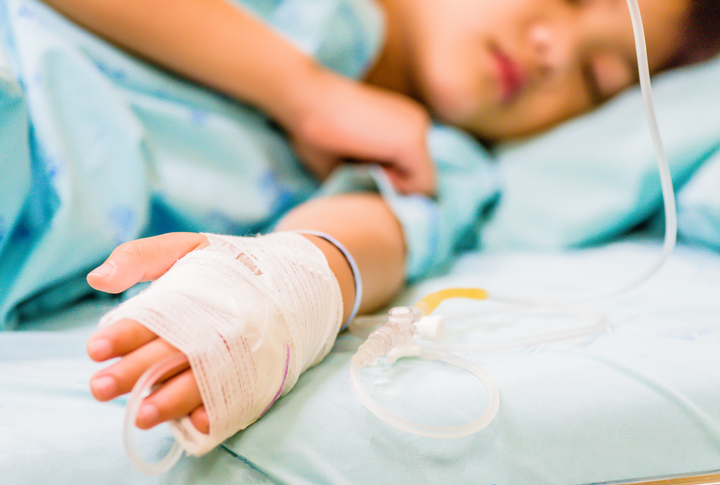HHV-6, CMV and HSV1/2 were the most likely to reactivate, but herpesvirus reactivation was just as likely prior to chemotherapy.
During allogeneic hematopoietic cell transplantation (HCT), more than 90% of the patients have reactivation of various viruses, including HHV-6. Antiviral therapy often is prescribed.
During periods of febrile neutropenia (FN) during cancer chemotherapy children often are treated with broad-spectrum antibiotics, although bacterial organisms are isolated only about a third of the time. Teams from academic medical centers in Frankfurt and Lubeck, Germany, wondered how often febrile neutropenia in children undergoing cancer chemotherapy (as contrasted to HCT) might be due to viremia and, if so, whether the presence of viremia during FN was associated with worse outcomes.
The team used quantitative PCR on plasma samples to assess the frequency of viremia with cytomegalovirus (CMV), Epstein-Barr virus (EBV), adenovirus, HHV-6 and herpes-simplex virus 1/2 (HSV1/2) at several time points:
- At diagnosis, before chemotherapy was started;
- At a routine examination during intensive chemotherapy, when patients were not febrile; and
- During episodes of FN.
Seventy-nine children (mean age 6 years), including 66 hematological malignancies, were included in the study, and 362 blood samples were analyzed. The limit of quantification for each assay was reportedly 500 copies/ml. Overall, 9.3% of the 362 blood samples were positive for one of the viruses tested: CMV, 3.3%; HHV-6, 2.7%; HSV1/2, 2.2%; EBV, 0.8%; adenovirus, 0.3%. Overall, 27.8% of the patients had at least one positive PCR finding.
There were no significant differences in the frequency of viraemia between test results prior to chemotherapy (11.1%), test results during a routine control period (11.0%) and during an episode with febrile neutropenia (8.8%). The results for HHV-6 are in contrast to one previous report in which the detection of HHV6 in blood doubled from initial assessment to testing during a febrile episode, from 17.4% to 37.1% (Michalek 1999).
There also were no significant differences in the duration of fever, the prevalence of either neutropenia or lymphopenia, the severity of mucositis, the incidence of diarrhea or the likelihood of ICU admission, when comparing patients who had viremia vs. those without viremia during episodes of FN.
The investigators conclude that viremia in pediatric cancer patients generally does not have a major clinical impact.
Read the full article: Barnbrock 2024

